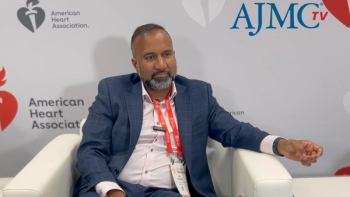
Surgeries and Endoscopic Procedures Offer Different Benefits for MASLD
Key Takeaways
- Bariatric surgery, particularly RYGB and VSG, significantly improves liver health in MASLD, with high rates of steatosis remission and fibrosis reduction.
- Endoscopic techniques, such as ESG, IGBs, and DMR, offer less invasive alternatives with meaningful liver benefits, especially for patients contraindicated for surgery.
Researchers said longitudinal studies are critical to refine and optimize the management of metabolic dysfunction–associated steatotic liver disease (MASLD).
As cases of metabolic dysfunction–associated steatotic
A comprehensive review published in the
Bypass and Sleeve Gastrectomy Lead in Long-Term Gains
Bariatric surgery has long been associated with
In contrast, adjustable gastric banding (AGB) offered more modest results, improving steatosis in roughly 42% of cases compared with 76% with RYGB. Although the more aggressive biliopancreatic diversion with duodenal switch (BPD-DS) showed profound hepatic improvements—35% reduction in fatty liver after 1 year and 60% reduction after 3 years—it came with higher nutritional risks, limiting its routine use.
Protein–calorie malnutrition and deficiencies in fat-soluble vitamins are known complications of BPD-DS, and in rare cases, the procedure has been linked to
Endoscopic Procedures Offer Viable, Less Invasive Alternatives
Though not as powerful as surgery, endoscopic therapies have expanded treatment options for MASLD, particularly for those with contraindications to surgical procedures. IGBs demonstrated rapid steatosis reduction, with 1 study showing
“Additionally, DMR exhibited insulin-sensitizing and lipid-lowering effects independent of weight loss or glycemic control, making it a promising intervention for MASLD and MASH,” the authors said. “Further studies are needed to establish its long-term role in metabolic and liver disease management.”
The duodenal-jejunal bypass liner (DJBL; EndoBarrier) is an endoscopic device designed to mimic the effects of gastric bypass surgery by reducing nutrient absorption. Clinical studies have shown that DJBL can lead to significant short-term weight loss, improved metabolic markers, and reductions in hepatic steatosis and liver stiffness, but fibrosis outcomes remain uncertain. Though promising, DJBL’s long-term safety and efficacy for MASLD and MASH will require further validation through ongoing trials like the RESET study (
Early clinical data also suggest the Magnetic Anastomosis System (MAS)—a minimally invasive bariatric technique that connects 2 parts of the small intestine without surgical incisions—may lead to significant weight loss, improved blood sugar control, and reduced reliance on cardiometabolic medications, especially when combined with VSG.1 Although initial findings are promising, larger trials are needed to confirm MAS’s long-term safety and potential benefits for liver outcomes in MASLD and MASH.
“Optimal procedural selection should consider patient-specific clinical factors, hepatic severity, and long-term therapeutic objectives,” the authors wrote. “Continued research through well-designed longitudinal studies will be critical to refine and optimize MASLD management strategies.”
References
- Tasabehji D, Saleh S, Mokadem M. Impact of bariatric surgery and endoscopic therapies on liver health in metabolic dysfunction-associated steatotic liver disease: a review. J Clin Med. 2025;14(12):4012. doi:10.3390/jcm14124012
- Bonavitacola J. Weight loss surgery associated with blood pressure control. AJMC®. September 5, 2024. Accessed July 1, 2025.
https://www.ajmc.com/view/weight-loss-surgery-associated-with-blood-pressure-control - Kaltwasser J. Bariatric surgery leads to long-term hypertension improvement in patients with obesity. AJMC. February 5, 2024. Accessed July 1, 2025.
https://www.ajmc.com/view/bariatric-surgery-leads-to-long-term-hypertension-improvement-in-patients-with-obesity - Côté M, Pelletier L, Nadeau M, et al. Micronutrient status 2 years after bariatric surgery: a prospective nutritional assessment. Front Nutr. 2024;11:1385510. doi:10.3389/fnut.2024.1385510
- Forlano R, Ippolito AM, Iacobellis A, et al. Effect of the BioEnterics intragastric balloon on weight, insulin resistance, and liver steatosis in obese patients. Gastrointest Endosc. 2010;71(6):927-933. doi:10.1016/j.gie.2009.06.036
- RESET system pivotal trial (rev F) (STEP-1). ClinicalTrials.gov. Updated July 18, 2024. Accessed July 1, 2025.
https://clinicaltrials.gov/study/NCT04101669
Newsletter
Stay ahead of policy, cost, and value—subscribe to AJMC for expert insights at the intersection of clinical care and health economics.





























































